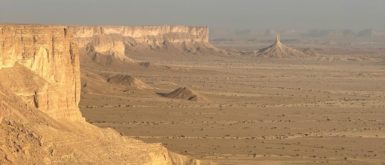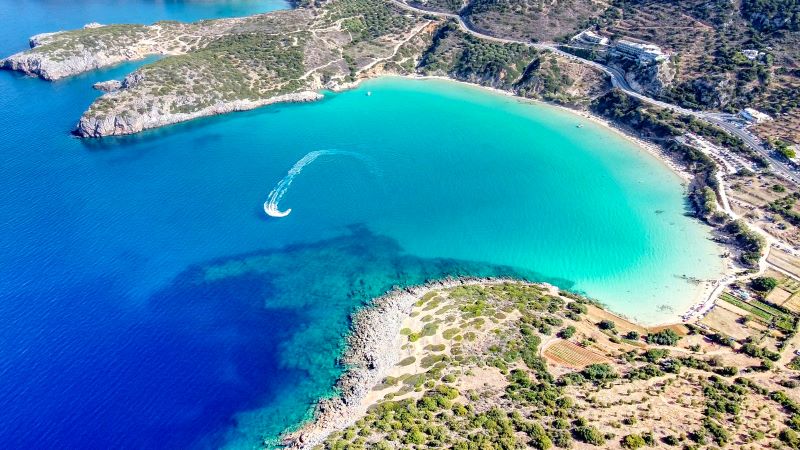
Crete, the largest island in Greece, is known for its stunning beaches, crystal-clear waters, rich history, and mouthwatering cuisine.
With so much to offer, it can be overwhelming to plan a trip to Crete. However, fear not, as we have compiled a list of the top 30 things to do on this beautiful island.
From exploring the ancient Palace of Knossos, to hiking the breathtaking Samaria Gorge, to swimming in the crystal-clear waters of Elafonisi and Vai Beach, there is something for everyone in Crete.
You can also wander through the charming streets of Chania Old Town, take a boat tour to the stunning island of Spinalonga, visit the Heraklion Archaeological Museum, and hike the Imbros Gorge for stunning views.
30 Best Things To Do In Crete, Greece
In addition to its natural beauty, Crete is renowned for its delicious cuisine, including Cretan wine, olive oil, and fresh orange juice.
You can enjoy a traditional Greek coffee in a local cafe, taste the local cuisine in one of the island’s many restaurants, or take a cooking class to learn how to make traditional Cretan dishes.
Getting around Crete is relatively easy, with a variety of transportation options, including rental cars, buses, and taxis.
Whether you’re seeking adventure, relaxation, or a bit of both, Crete is sure to exceed your expectations and provide an unforgettable experience.
Certainly! Here are the top 30 things to do in Crete, Greece:
1. Visit the Palace of Knossos and learn about the Minoan civilization
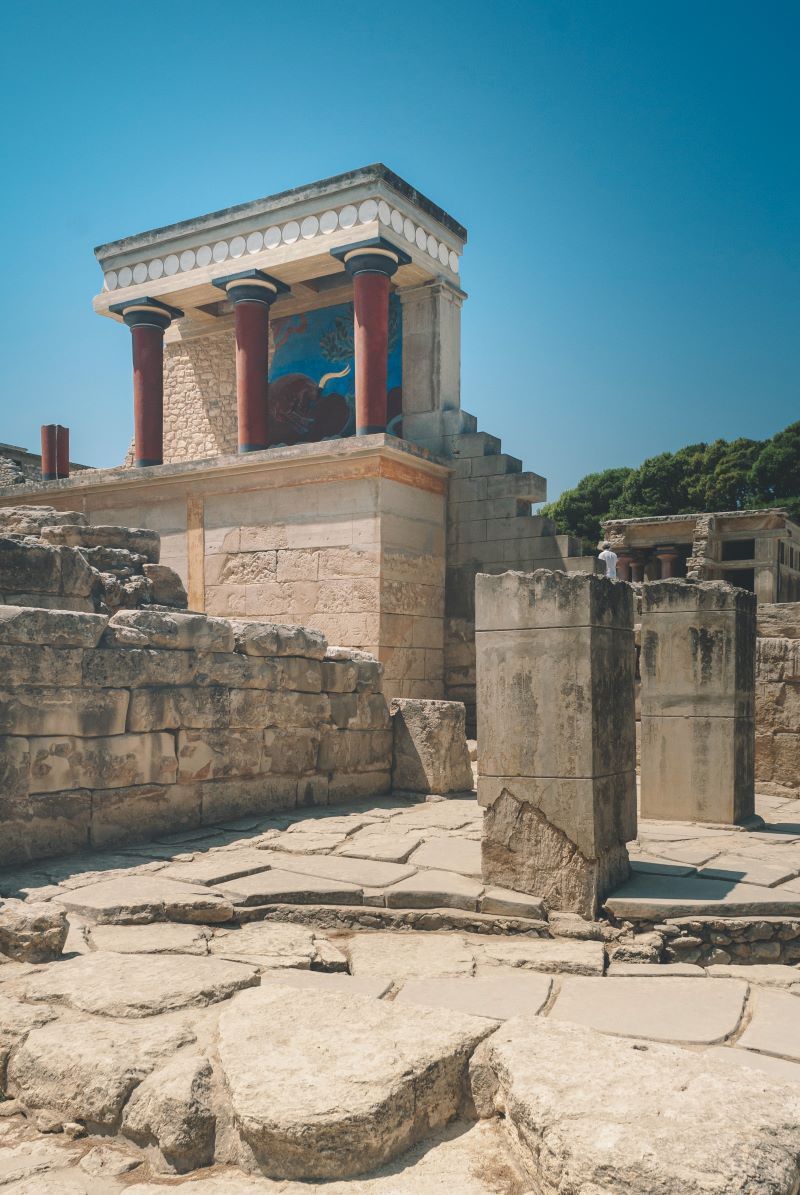
The Palace of Knossos is an ancient Minoan palace located near the city of Heraklion on the island of Crete, Greece.
It is considered one of the most important archaeological sites in Crete, and one of the most famous ancient ruins in the world.
The palace was built around 1900 BC and was the center of the Minoan civilization, which flourished in Crete during the Bronze Age.
The palace was destroyed and rebuilt several times, with its final destruction occurring around 1450 BC.
Today, visitors can explore the ruins of the palace, which include grand halls, throne rooms, courtyards, and intricate frescoes and artwork that offer a glimpse into the opulence and sophistication of Minoan culture.
The site is also home to a number of impressive architectural features, such as grand staircases, labyrinthine corridors, and underground storage rooms.
Visitors can take a guided tour of the palace or explore the ruins independently.
There is also an on-site museum where visitors can learn more about the history and archaeology of the site, as well as view artifacts and exhibits related to the Minoan civilization.
2. Explore the Samaria Gorge, the longest in Europe
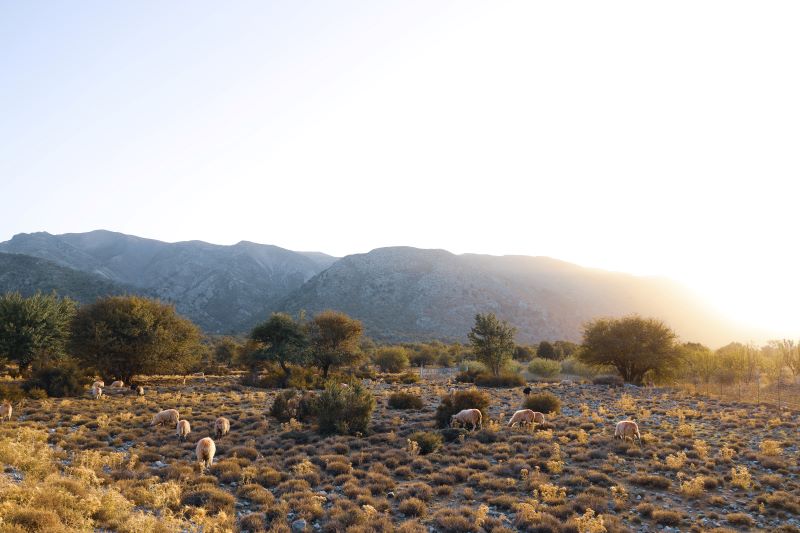
Exploring the Samaria Gorge is one of the most popular activities for visitors to Crete, and for good reason.
This natural wonder is the longest gorge in Europe, stretching for 16 kilometers from the Omalos Plateau to the shores of the Libyan Sea.
The gorge is situated within the Samaria National Park, which is home to an abundance of rare flora and fauna, including the Cretan wild goat, known as the “kri-kri”. The park is also a protected area and an important habitat for several endemic and endangered species.
The hike through the Samaria Gorge can be challenging, with rocky terrain and steep inclines, but the stunning views and natural beauty are well worth the effort.
The trek typically takes between four to seven hours to complete, depending on your pace and fitness level.
Along the way, you’ll pass through narrow passages, towering cliffs, and pristine streams, with plenty of opportunities to stop and take in the scenery.
At the end of the hike, you’ll reach the small village of Agia Roumeli, where you can relax and enjoy a swim in the crystal-clear waters of the Libyan Sea.
To explore the Samaria Gorge, it’s best to plan ahead and bring plenty of water and snacks, as there are limited facilities along the way.
It’s also important to wear sturdy shoes and comfortable clothing, as the terrain can be uneven and rocky.
3. Relax on the beautiful beaches of Elafonisi, Balos and Falassarna
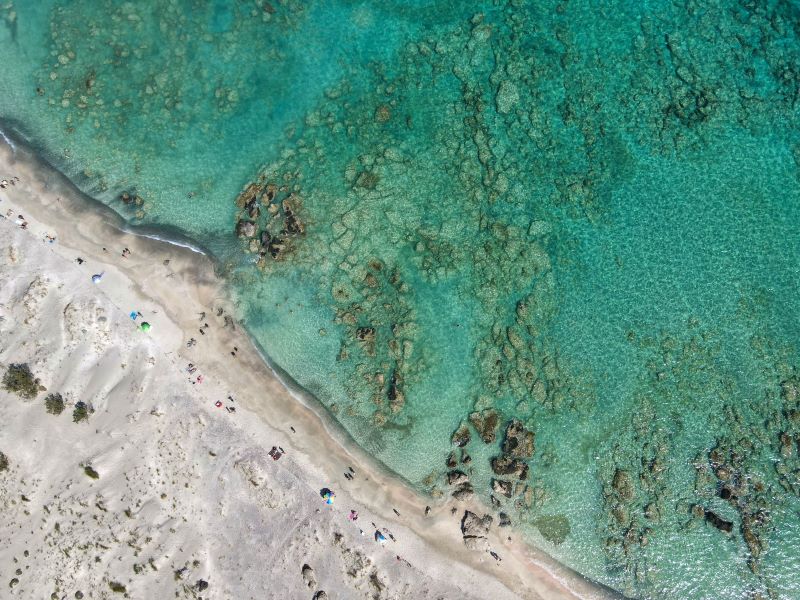
Crete is home to some of the most stunning beaches in Greece, and the beaches of Elafonisi, Balos, and Falassarna are among the most beautiful on the island.
Elafonisi is a small island located off the southwestern coast of Crete, known for its breathtaking pink sand beaches and crystal-clear turquoise waters.
The shallow waters and gentle waves make it an ideal spot for swimming and sunbathing, while the picturesque landscape offers ample opportunities for hiking and exploring.
Balos Beach is located on the northwestern coast of Crete and is famous for its unique turquoise waters and white sandy beaches.
The beach is accessible by boat or on foot, with a trek through a rocky path that leads to the stunning vista from above.
The beach is a popular spot for snorkeling, swimming, and relaxing in the sun.
Falassarna is a long stretch of sandy beach on the western coast of Crete, with clear blue waters and dramatic rock formations.
The beach is known for its sunsets and is a popular spot for swimming, windsurfing, and kiteboarding.
There are several taverns and cafes along the beach where visitors can enjoy a meal or a drink while taking in the stunning scenery.
All three of these beaches are well-equipped with amenities such as sunbeds and umbrellas, beach bars, and restaurants.
Visitors can spend a full day or simply a few hours soaking up the sun and enjoying the pristine waters.
4. Wander through the charming streets of Chania Old Town
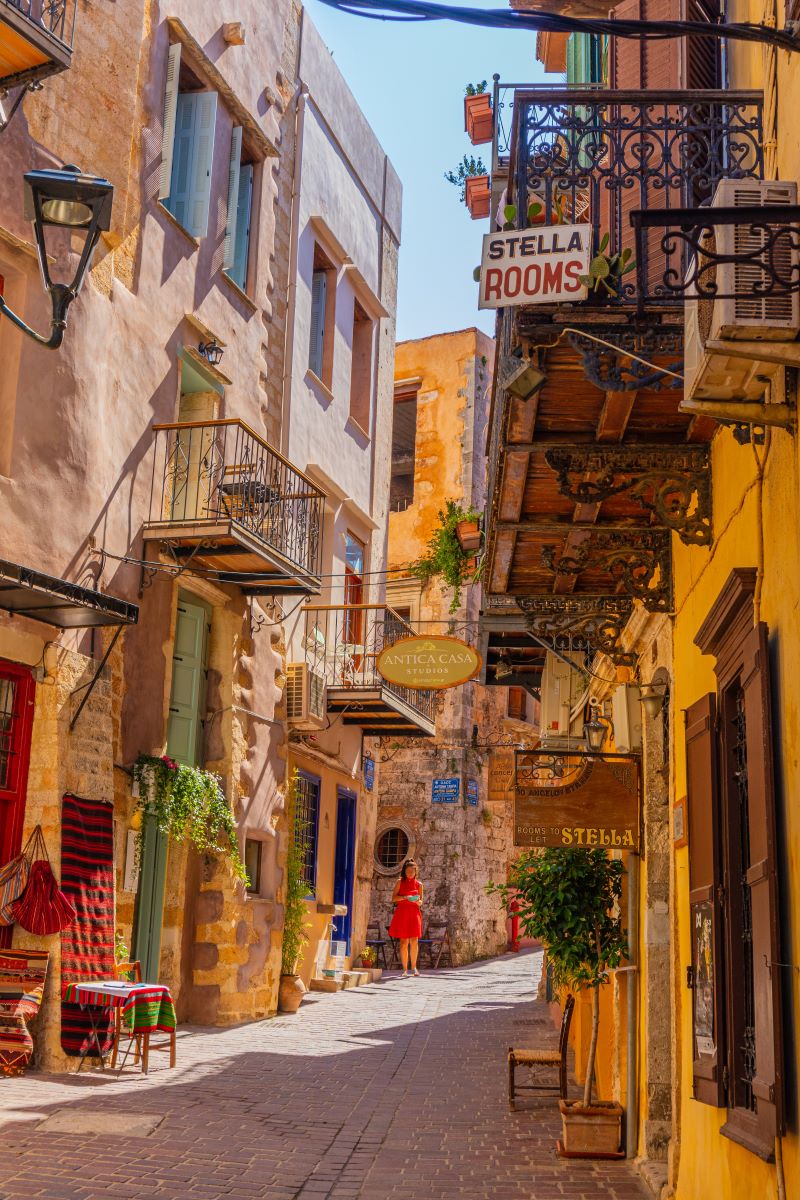
Chania Old Town is a charming and historic district located in the heart of the city of Chania, on the western coast of Crete.
The Old Town is known for its narrow streets, colorful buildings, and traditional architecture, which reflects the city’s rich history and cultural heritage.
Wandering through the streets of Chania Old Town is like stepping back in time.
The district is filled with well-preserved Venetian and Ottoman-era buildings, which house a variety of shops, restaurants, cafes, and galleries.
Visitors can stroll through the streets, admiring the beautiful facades and exploring the numerous hidden alleyways and courtyards.
One of the highlights of Chania Old Town is the Venetian Harbor, which is surrounded by historic buildings and lined with restaurants and cafes.
Visitors can take a stroll along the harbor, watch the fishing boats come in and out, and enjoy a meal or a drink with a view of the sea.
Another must-see attraction in Chania Old Town is the Municipal Market, a bustling indoor market filled with vendors selling everything from fresh produce to local cheeses, herbs, and spices.
The market is a great place to soak up the local culture and sample some of the island’s traditional cuisine.
Throughout the Old Town, visitors will also find a number of historic landmarks, such as the Mosque of the Janissaries, the Cathedral of the Presentation of the Virgin Mary, and the Archaeological Museum of Chania.
These landmarks offer a fascinating glimpse into the city’s rich history and cultural heritage.
5. Take a boat tour to the stunning island of Spinalonga
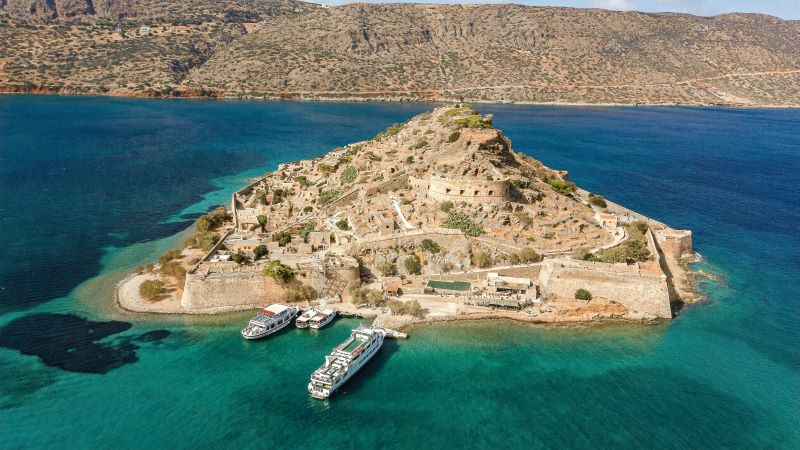
Spinalonga is a small, uninhabited island located off the eastern coast of Crete.
Despite its small size, it is one of the most popular attractions in the area, known for its stunning natural beauty and rich history.
One of the best ways to experience Spinalonga is by taking a boat tour from one of the nearby towns, such as Elounda or Agios Nikolaos.
The boat ride itself is an enjoyable experience, offering stunning views of the coastline and the sea.
Once you arrive on Spinalonga, you’ll be greeted by a small but picturesque island filled with winding alleys, ancient ruins, and beautiful beaches.
The island has a fascinating history, having served as a Venetian fortress in the 16th century and later as a leper colony in the early 20th century.
Visitors can explore the ruins of the Venetian fortress, walk through the narrow streets of the abandoned leper colony, and enjoy a swim in the crystal-clear waters surrounding the island.
The island’s natural beauty is also a draw, with stunning views of the sea and the surrounding landscape.
Many boat tours also include stops for swimming and snorkeling in the clear waters near the island, as well as a stop at a nearby beach for sunbathing and relaxation.
6. Visit the Heraklion Archaeological Museum and see ancient artifacts
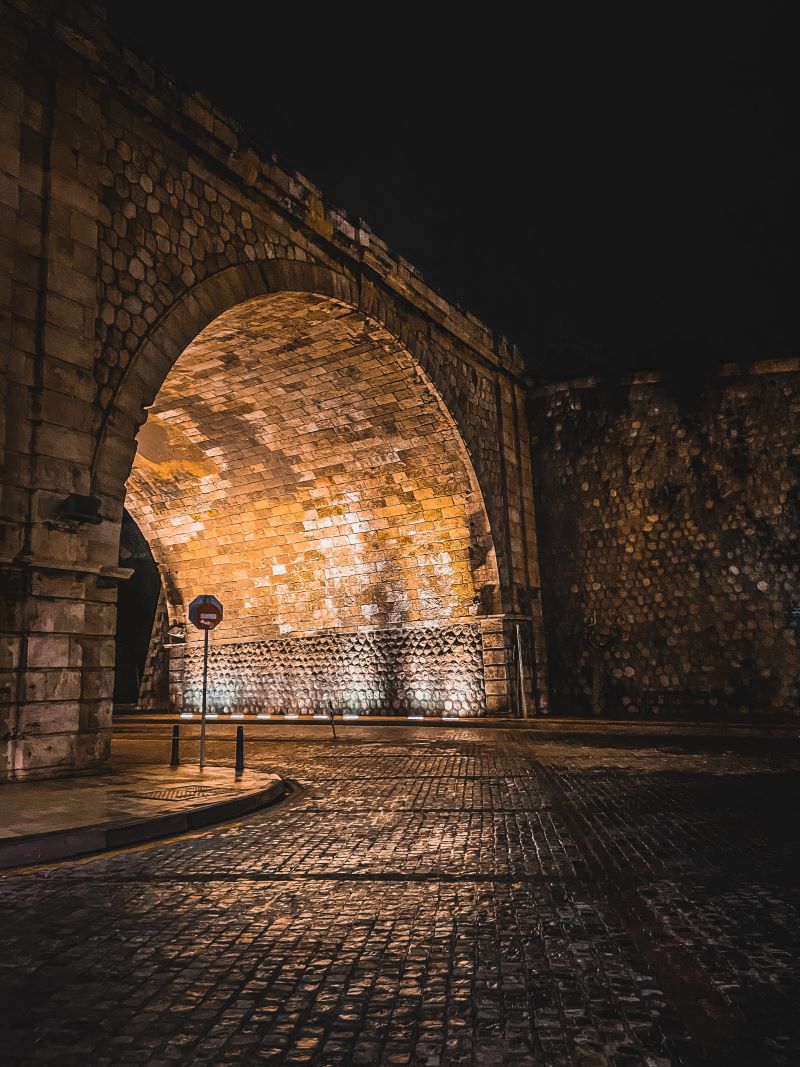
The Heraklion Archaeological Museum is one of the most important museums in Greece and one of the most significant in the world.
Located in the city of Heraklion, it houses a vast collection of artifacts from the Minoan civilization, which flourished on Crete from around 3000 BCE to 1100 BCE.
Visitors to the museum can see a wide range of ancient artifacts, including pottery, jewelry, tools, and weapons, as well as frescoes and other works of art.
Some of the highlights of the collection include the Phaistos Disc, a mysterious circular artifact with inscriptions that have yet to be fully deciphered, and the Bull’s Head Rhyton, a beautifully carved drinking vessel in the shape of a bull’s head.
The museum is divided into several galleries, each dedicated to a different period of Minoan history. The galleries are organized chronologically, allowing visitors to trace the development of Minoan civilization over time.
The exhibits are accompanied by detailed explanations and descriptions, providing context and insight into the significance of each artifact.
In addition to the Minoan artifacts, the museum also houses collections from other ancient cultures, including the Roman and Byzantine periods.
There is also a library and a conservation laboratory on site, where visitors can learn more about the work of preserving and studying these precious artifacts.
7. Hike the Imbros Gorge for beautiful views
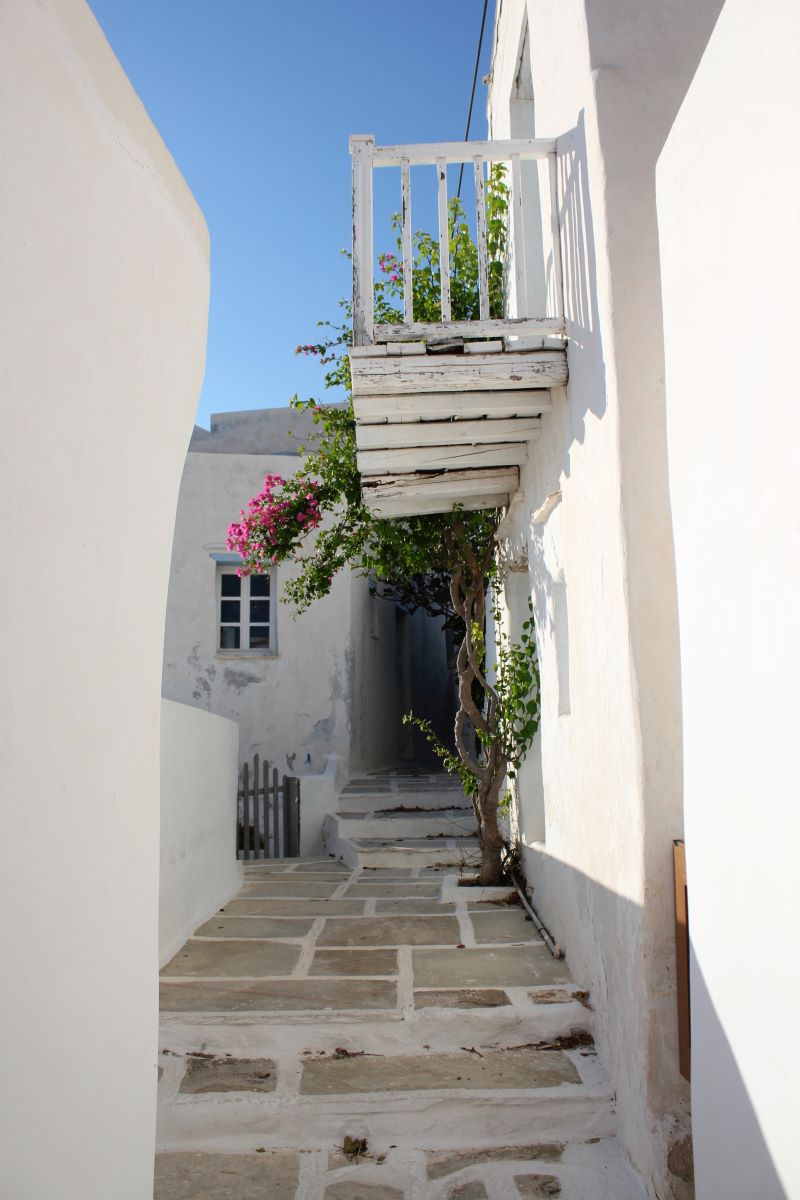
The Imbros Gorge is a natural wonder located in the south of Crete, near the town of Chora Sfakion. Hiking through the gorge is a popular activity for visitors to the island, offering stunning views of the surrounding landscape and a chance to experience the island’s natural beauty up close.
The hike itself is relatively easy, taking around two to three hours to complete, depending on your pace.
The trail winds through the gorge, which is surrounded by towering cliffs and lush vegetation, providing ample opportunities for breathtaking views and photo opportunities.
Along the way, hikers will encounter a variety of natural features, including streams, waterfalls, and rock formations. The trail is well-marked and easy to follow, making it a great option for hikers of all skill levels.
One of the highlights of the Imbros Gorge hike is the stunning scenery.
As you make your way through the gorge, you’ll be treated to sweeping views of the surrounding mountains and valleys, as well as the crystal-clear waters of the streams and rivers that run through the area.
At the end of the hike, you’ll arrive in the small village of Imbros, where you can rest and refuel at one of the local tavernas before heading back to your starting point.
8. See the Ancient Ruins of Phaistos
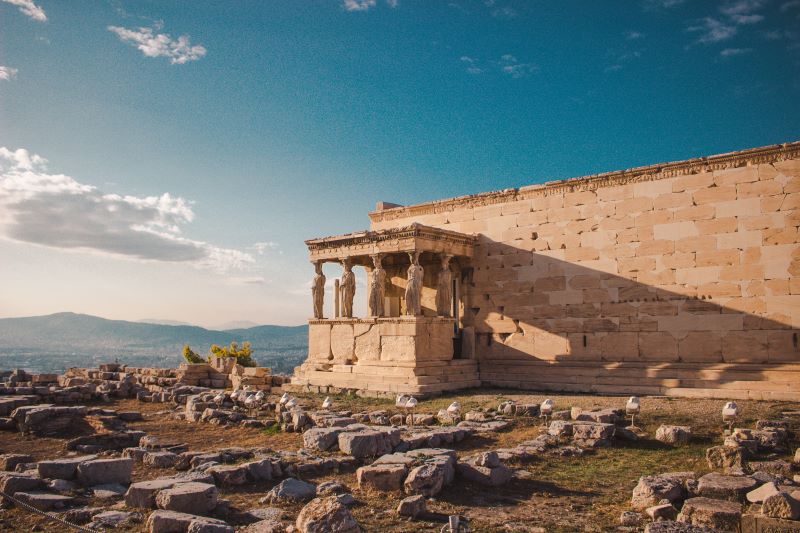
The ancient ruins of Phaistos, located on a hilltop in the southern part of Crete, are a must-visit for history buffs and anyone interested in ancient civilizations.
The site was once a thriving Minoan palace complex and has been excavated and restored to reveal a wealth of information about the Minoan culture.
Visitors can explore the remains of the palace, which include courtyards, living quarters, and storage rooms.
One of the highlights of the site is the Phaistos Disc, a mysterious and enigmatic artifact that dates back to the 2nd millennium BCE and features symbols that have yet to be fully deciphered.
The site offers stunning views of the surrounding landscape and is a peaceful and serene place to spend a few hours exploring the history of Crete.
9. Swim in the crystal-clear waters of Vai Beach
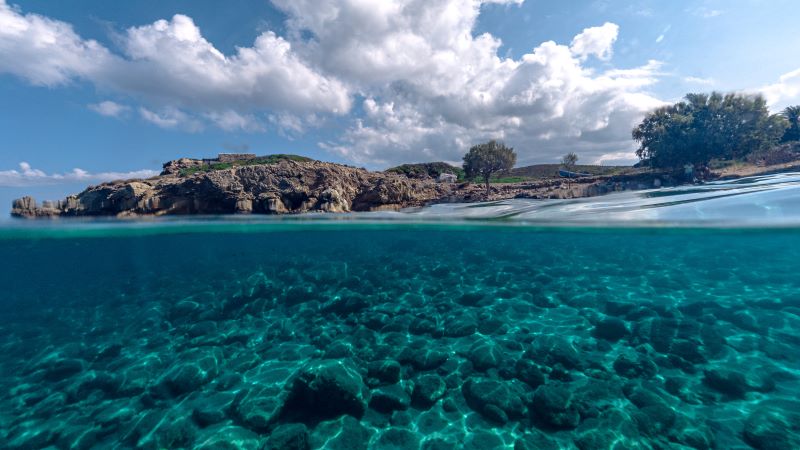
Vai Beach, also known as Palm Beach, is a stunning stretch of coastline located on the eastern side of Crete, near the town of Sitia.
The beach is famous for its crystal-clear waters, white sand, and the grove of palm trees that line its shores, making it one of the most popular beaches on the island.
The water at Vai Beach is calm and clear, making it ideal for swimming, snorkeling, and other water activities.
The beach is also surrounded by rocky cliffs and hills, providing a beautiful natural backdrop for sunbathing and relaxing.
One of the unique features of Vai Beach is the palm trees that grow in the area. The palm grove is one of the largest in Europe and provides shade and a tropical feel to the beach.
Visitors can take a stroll through the grove and enjoy the views of the surrounding hills and coastline.
The beach is equipped with all the amenities you need for a comfortable day at the beach, including sun loungers, umbrellas, and beach bars serving refreshments and snacks.
The surrounding area also has several restaurants and tavernas where you can enjoy a delicious meal after a day in the sun.
10. Explore the Monastery of Preveli
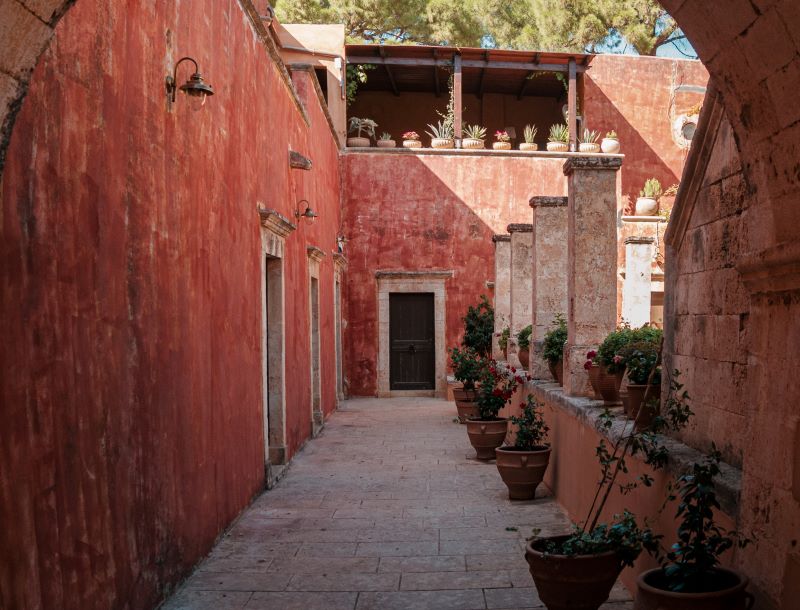
Crete is home to many historic monasteries, each with its own unique history and architectural style.
The Preveli Monastery is another historic monastery located in the southern part of Crete, near the town of Plakias.
The monastery was founded in the 16th century and played a significant role in the island’s history during the Ottoman occupation.
Visitors to the Preveli Monastery can explore the beautiful gardens and courtyard, as well as the impressive chapel, which houses a collection of religious artifacts and icons.
The monastery also offers stunning views of the surrounding landscape and the nearby beach, which is known for its crystal-clear waters and beautiful scenery.
11. Visit the ancient city of Gortyna
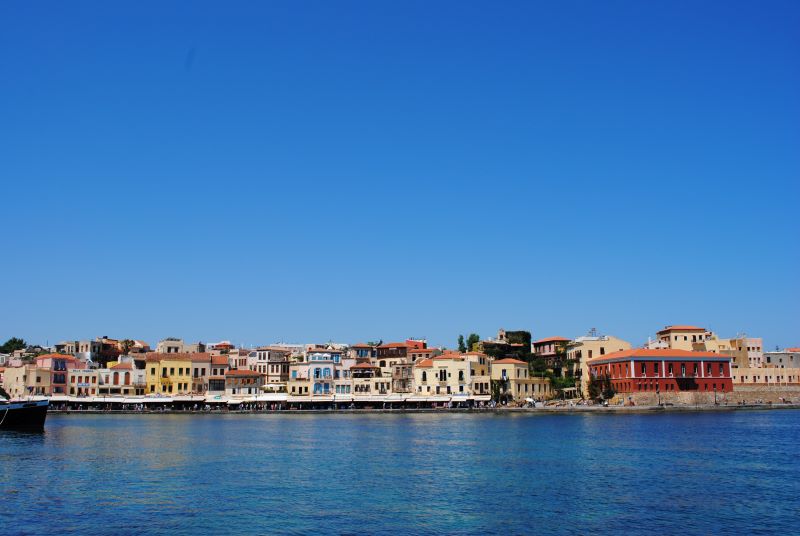
Gortyna is an ancient city located in the central part of the island of Crete. It was one of the most important cities in ancient Crete and served as the capital of the island during the Roman period.
Today, Gortyna is an important archaeological site that offers visitors a glimpse into the island’s rich history and culture.
Visitors to Gortyna can explore the extensive ruins of the ancient city, including the remains of the city walls, public buildings, and private residences.
One of the most notable landmarks in Gortyna is the Law Code of Gortyna, which is inscribed on a large stone tablet and is one of the most significant legal documents from ancient Greece.
The Law Code of Gortyna is written in the ancient Greek language and dates back to the 5th century BC.
It covers a wide range of topics, including marriage, divorce, inheritance, and property rights. The tablet is on display at the archaeological site and is a must-see for anyone interested in ancient history and legal systems.
In addition to the Law Code, visitors to Gortyna can also explore the Odeon, which was a small theater used for musical performances and other cultural events.
The Roman Forum, which was the center of the city’s political and social life, is also a highlight of the site, as are the remains of the ancient temples dedicated to various gods and goddesses.
12. Go scuba diving to see the underwater world of Crete
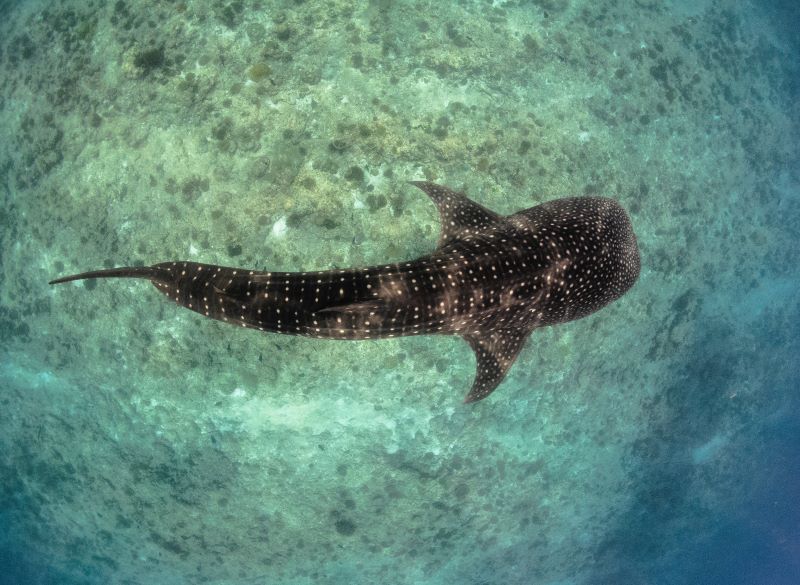
Crete offers a fantastic opportunity to explore the underwater world with its crystal-clear waters and diverse marine life.
Scuba diving is a popular activity on the island, with a variety of dive sites suitable for both beginner and experienced divers.
There are many diving centers on the island that offer diving courses, equipment rental, and guided tours to the best dive sites.
Some of the most popular dive sites in Crete include the Elounda Reef, the Dragon’s Cave, and the Elephant Cave.
These sites are known for their rich marine life, including colorful fish, octopuses, sea turtles, and even dolphins and seals in some areas.
One of the most unique diving experiences in Crete is diving to explore the remains of the WWII shipwreck of the German cargo ship, “Messerschmitt,” which sank off the coast of Chania.
The wreck is now home to a variety of marine life and provides a fascinating glimpse into the island’s history.
For those who are new to scuba diving, there are many dive centers that offer beginner courses and training programs.
These courses provide a safe and fun introduction to the world of scuba diving, allowing visitors to explore the beautiful underwater world of Crete with confidence.
13. Taste delicious Cretan wine, olive oil and Fresh Cretan Orange Juice

Cretan cuisine is renowned for its use of fresh, locally-sourced ingredients, and visitors to the island can experience the flavors of the region by sampling its delicious wines, olive oils, and fresh orange juice.
Cretan wine has a long and rich history, with vineyards dating back thousands of years. The island is home to several varieties of grapes, including the indigenous Vidiano, Vilana, and Liatiko grapes.
Wine lovers can explore the island’s many wineries and vineyards, which offer guided tours and tastings.
The wines produced on the island are known for their unique flavors and aromas, which reflect the island’s diverse terrain and climate.
In addition to its wine, Crete is also famous for its high-quality olive oil. The island is home to over 30 million olive trees, and its olive oil is renowned for its rich, fruity flavor and health benefits.
Visitors can explore the island’s many olive groves and sample the oil at local markets and shops.
Finally, no visit to Crete is complete without trying its fresh orange juice. The island is home to vast orange groves, and its oranges are known for their juicy, sweet flavor.
Visitors can enjoy freshly squeezed orange juice at local cafes and restaurants, or purchase oranges to enjoy at their leisure.
14. Visit Matala
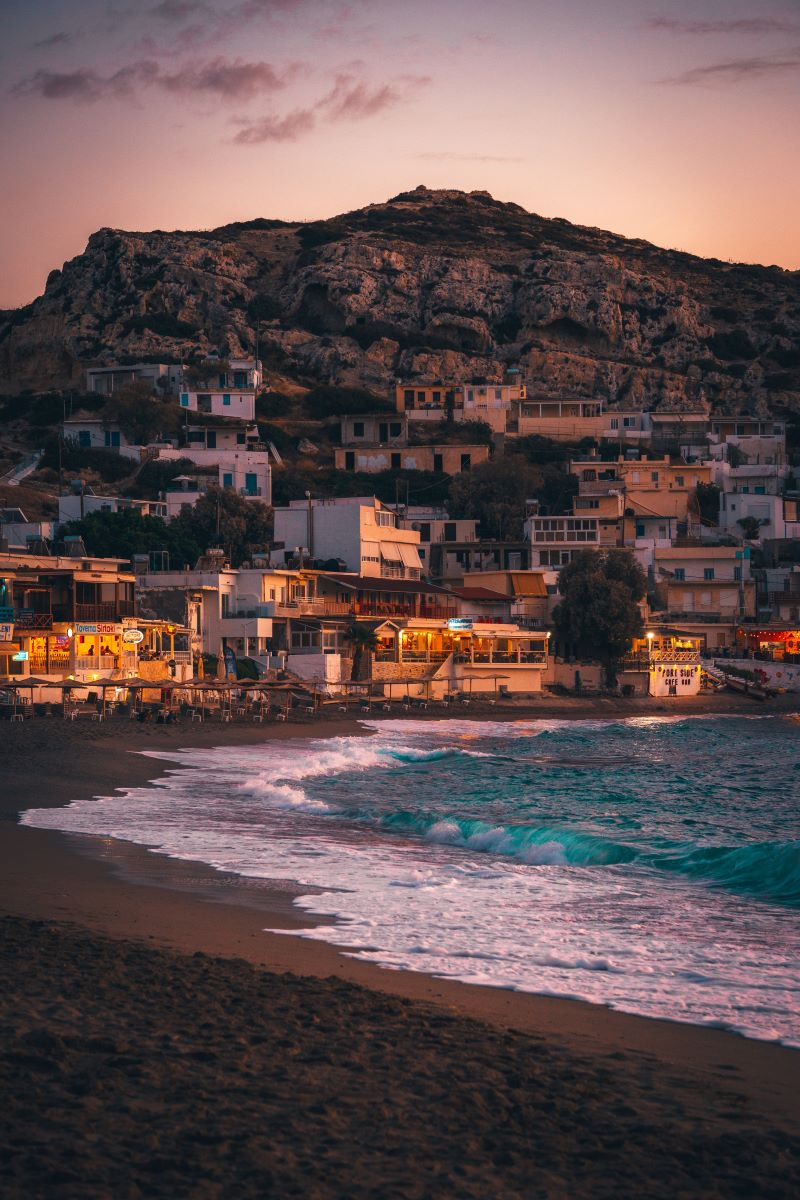
Matala is a picturesque village located on the south coast of Crete, known for its stunning beaches, crystal-clear waters, and unique rock formations.
The village is situated on a bay with a sandy beach lined with colorful umbrellas and sunbeds, making it a popular spot for swimming, sunbathing, and water sports.
The nearby cliffs and caves are particularly famous for their fascinating history, as they were once used as a hippie commune during the 1960s and 70s. Today, visitors can explore the caves and learn about their cultural significance, as well as enjoy the stunning views of the surrounding landscape.
In addition to the beach and caves, the village of Matala also boasts a vibrant nightlife scene, with many bars and restaurants offering live music and entertainment.
The village has a laid-back and bohemian atmosphere, attracting visitors from all over the world who are seeking a unique and unforgettable experience in Crete.
15. Enjoy a traditional Greek coffee in a local cafe

Enjoying a traditional Greek coffee in a local cafe is a must-do experience for visitors to Crete.
Greek coffee, also known as “ellinikos kafes,” is a strong and flavorful coffee made by boiling finely ground coffee beans and sugar in a traditional copper pot known as a “briki.”
In Crete, coffee is not just a beverage, but a social experience that is best enjoyed in a local cafe or kafeneio.
These cafes are often small and cozy, with outdoor seating that allows visitors to enjoy the sunshine and people-watch.
When ordering Greek coffee, visitors can choose between several degrees of sweetness, from “sketos” (no sugar) to “glykos” (sweet).
The coffee is typically served with a glass of water and a small treat, such as a traditional Cretan cookie or piece of Turkish delight.
As visitors sip their coffee, they can take in the sights and sounds of the local cafe culture, watching as locals gather to chat, read the newspaper, or play backgammon.
This is a great opportunity to immerse oneself in the island’s culture and get a glimpse into the daily lives of its people.
16. Take a walk along the Venetian harbor in Rethymno
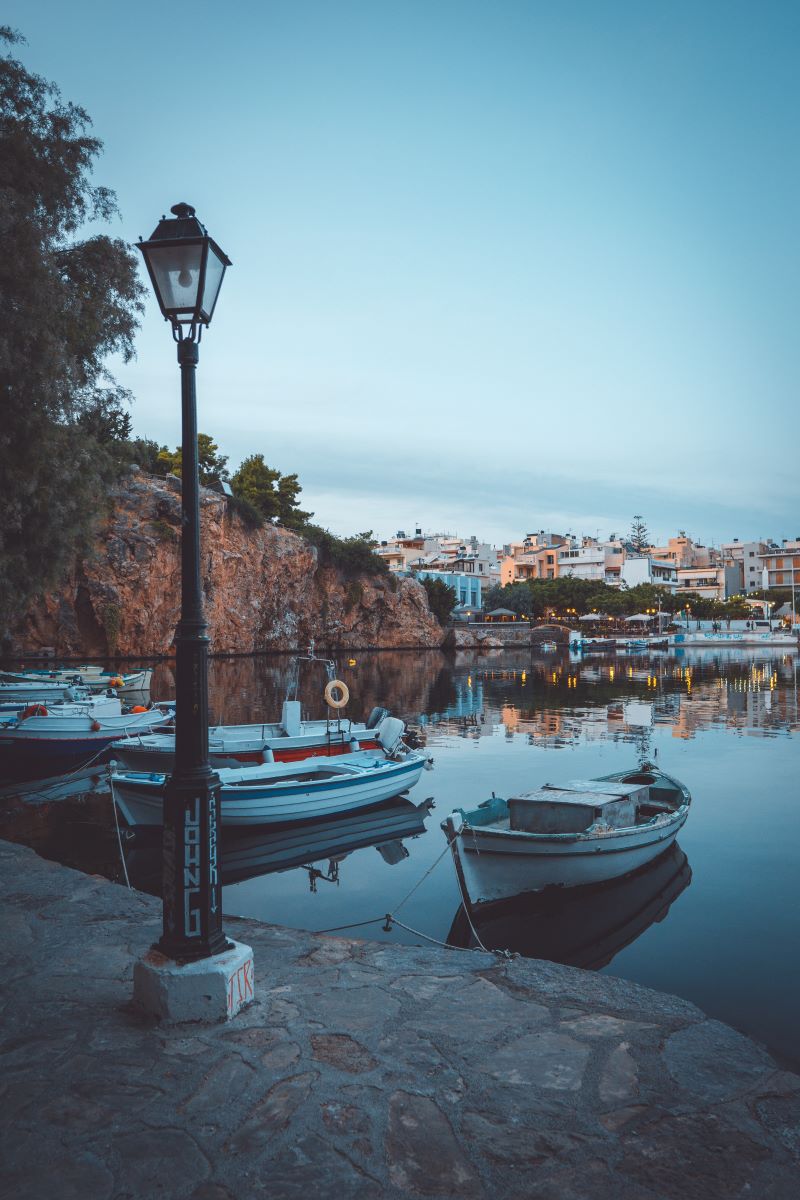
Taking a walk along the Venetian harbor in Rethymno is a must-do experience for visitors to Crete.
The harbor dates back to the 16th century and is considered one of the most picturesque and charming spots on the island.
Visitors can start their walk at the old lighthouse, which offers stunning views of the harbor and the Aegean Sea beyond.
From there, they can stroll along the waterfront, taking in the colorful fishing boats, historic buildings, and charming cafes and restaurants.
The harbor is lined with Venetian-era buildings, many of which have been restored and now house galleries, shops, and museums.
Visitors can explore the Venetian fortress, which was built to protect the harbor from invading forces, or visit the Archaeological Museum of Rethymno, which houses a collection of artifacts from the island’s ancient past.
As visitors walk along the harbor, they can stop to admire the various sculptures and monuments that dot the waterfront, including the iconic statue of the “fisherman with the net.” They can also take a break to enjoy a coffee or a bite to eat at one of the many cafes and restaurants that line the waterfront.
17. Visit the Cretaquarium to see the marine life of the Mediterranean
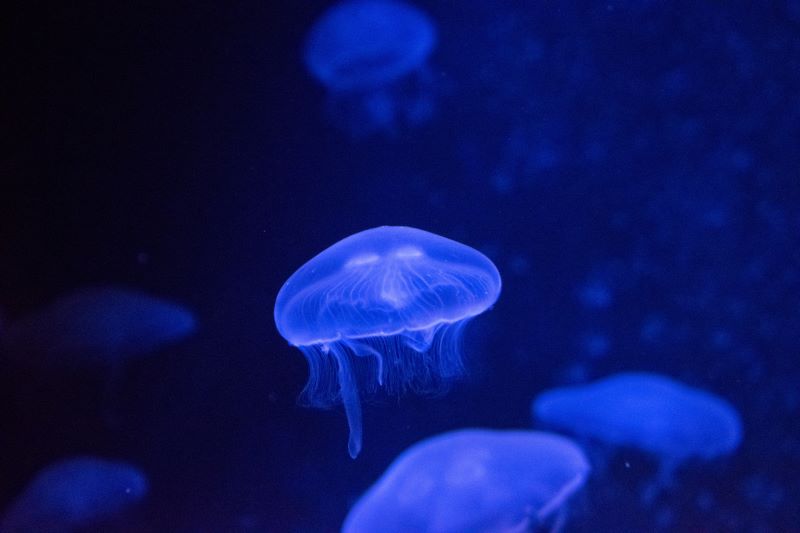
Visiting the Cretaquarium is a unique experience that allows visitors to discover the fascinating marine life of the Mediterranean Sea.
Located near the town of Gournes, just east of Heraklion, the Cretaquarium is one of the largest aquariums in Europe and home to over 2,000 sea creatures from the Mediterranean and around the world.
As visitors enter the aquarium, they are greeted by a stunning display of marine life in a large central tank, which includes schools of colorful fish, rays, and even sharks.
The tank is designed to mimic the natural environment of the Mediterranean Sea, with a variety of habitats, including rocky reefs, seagrass beds, and sandy bottoms.
Visitors can explore the various exhibits, which feature a wide range of marine life, from tiny seahorses and crabs to large turtles and octopuses.
They can learn about the habitats and behaviors of these creatures through informative displays and interactive exhibits.
One of the highlights of the aquarium is the interactive touch tank, where visitors can get up close and personal with sea stars, sea urchins, and other creatures that live in the shallow waters of the Mediterranean.
For those interested in conservation, the aquarium also has a research and conservation center, which works to protect and preserve the marine ecosystems of the Mediterranean.
18. Take a day trip to the picturesque island of Santorini
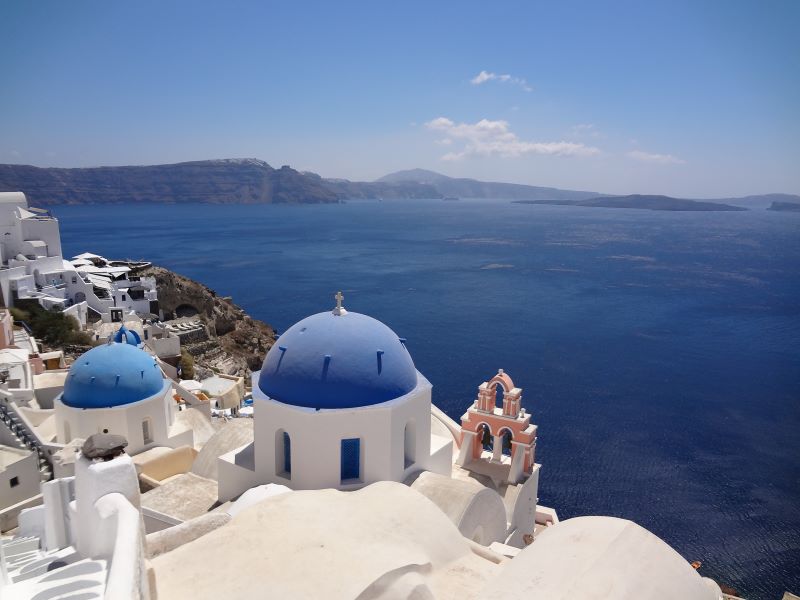
Taking a day trip to the picturesque island of Santorini from Crete is a popular and unforgettable experience.
Santorini is one of the most famous and beautiful Greek islands, known for its stunning caldera views, beautiful beaches, and charming whitewashed villages.
The journey to Santorini from Crete can be made by ferry or catamaran, both of which offer scenic views of the Aegean Sea. Once on the island, visitors can explore the beautiful villages of Oia, Fira, and Imerovigli, which are perched on the cliffs overlooking the caldera.
These villages are known for their iconic blue-domed churches, charming alleyways, and traditional Cycladic architecture.
Visitors can also take a boat tour of the caldera, which offers breathtaking views of the volcanic landscape and the sea.
They can swim in the hot springs, which are said to have healing properties, or explore the small island of Thirasia, which is a quieter and less crowded alternative to Santorini.
Santorini is also home to several beautiful beaches, including the Red Beach, which is known for its dramatic red cliffs, and the black sand beaches of Perissa and Kamari.
Visitors can relax on the beach, swim in the crystal-clear waters, and enjoy the stunning views of the Aegean Sea.
No trip to Santorini is complete without sampling the delicious local cuisine and wine.
Santorini is known for its unique wines, which are made from grapes grown in the volcanic soil of the island.
Visitors can also enjoy traditional Greek dishes such as moussaka, grilled octopus, and fresh seafood at the island’s many restaurants and tavernas.
19. Watch the sunset at the lighthouse of Chania
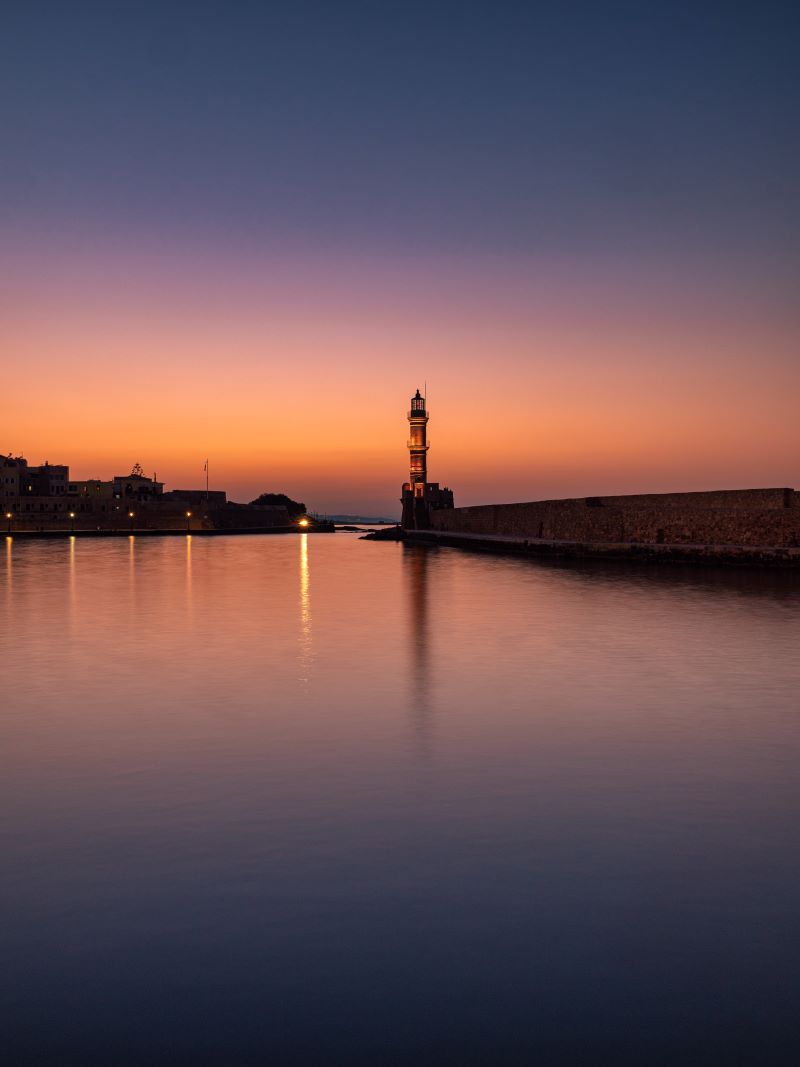
Watching the sunset at the lighthouse of Chania is a romantic and unforgettable experience that should not be missed while visiting Crete.
The lighthouse is located at the entrance of the old harbor of Chania and has been guiding ships to safety for centuries.
As the sun begins to set, the sky takes on a warm golden hue, and the colors of the surrounding buildings and sea begin to change.
The lighthouse provides the perfect backdrop for watching the sunset, with its red and white stripes standing out against the deep blue sea.
Visitors can enjoy the view from the small park that surrounds the lighthouse or sit at one of the nearby cafes or restaurants with a drink in hand.
The atmosphere is relaxed and peaceful, making it the perfect spot to unwind and take in the beauty of the moment.
As the sun sets, the sky becomes even more spectacular, with shades of orange, pink, and purple spreading across the horizon.
The lighthouse takes on an even more magical quality, and the surrounding buildings are bathed in a warm glow.
20. Experience the vibrant nightlife in Malia
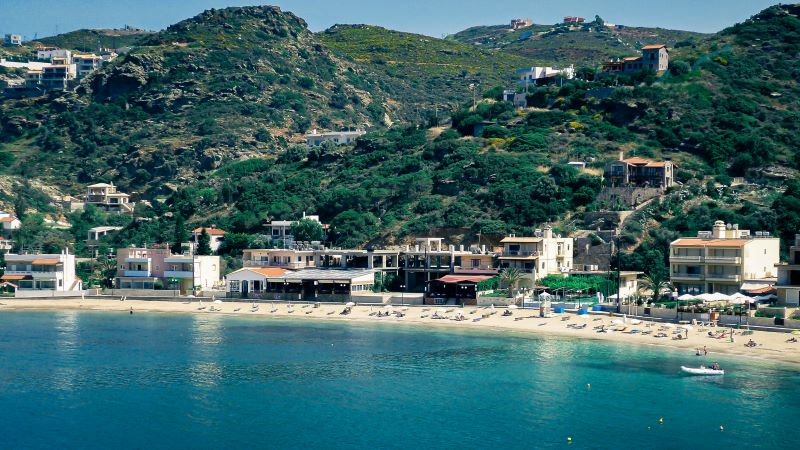
Malia is a town on the northern coast of Crete that is known for its vibrant nightlife.
It is a popular destination for young travelers looking to party and have a good time. The town has a variety of bars, clubs, and restaurants that cater to different tastes and preferences.
During the day, Malia is a charming and relaxed beach town, with long stretches of sandy beaches and crystal-clear waters. However, as the sun sets, the town comes alive with energy and excitement.
The streets are filled with people from all over the world, and the air is filled with music and laughter.
Visitors can start the evening with a drink at one of the beachside bars, which offer a relaxed and laid-back atmosphere.
They can then head to one of the many nightclubs in the town, which are known for their lively music and energetic crowds.
The clubs in Malia are open late into the night, with some staying open until the early hours of the morning.
Malia also has a variety of restaurants and cafes that are perfect for a late-night meal or snack.
Visitors can try traditional Greek dishes or international cuisine, and many places offer vegetarian and vegan options.
21. Walk through the impressive Botanical Park of Crete
The Botanical Park of Crete is a lush and expansive garden located near the village of Fournes, just outside of Chania.
The park is a unique and beautiful place to visit, offering visitors the opportunity to see a wide variety of plants and trees from all over the world.
The park is spread out over an area of 20 hectares and is divided into different zones, each with its own unique flora and fauna.
Visitors can wander through the park’s many paths and trails, discovering different types of plants and trees as they go. Along the way, they can also see a variety of animals, including goats, peacocks, and ducks.
One of the highlights of the Botanical Park of Crete is the collection of herbs and medicinal plants, which are grown on a large scale and used for various purposes, including aromatherapy, cosmetics, and cooking.
Visitors can learn about the various plants and their uses through guided tours or by exploring the park on their own.
The park also has a large restaurant and café, where visitors can relax and enjoy a meal or a drink amidst the beautiful surroundings.
The restaurant uses fresh, organic ingredients grown on the park’s premises, and the menu includes traditional Cretan dishes as well as international cuisine.
22. Visit the historic Arkadi Monastery and learn about its role in the Cretan resistance
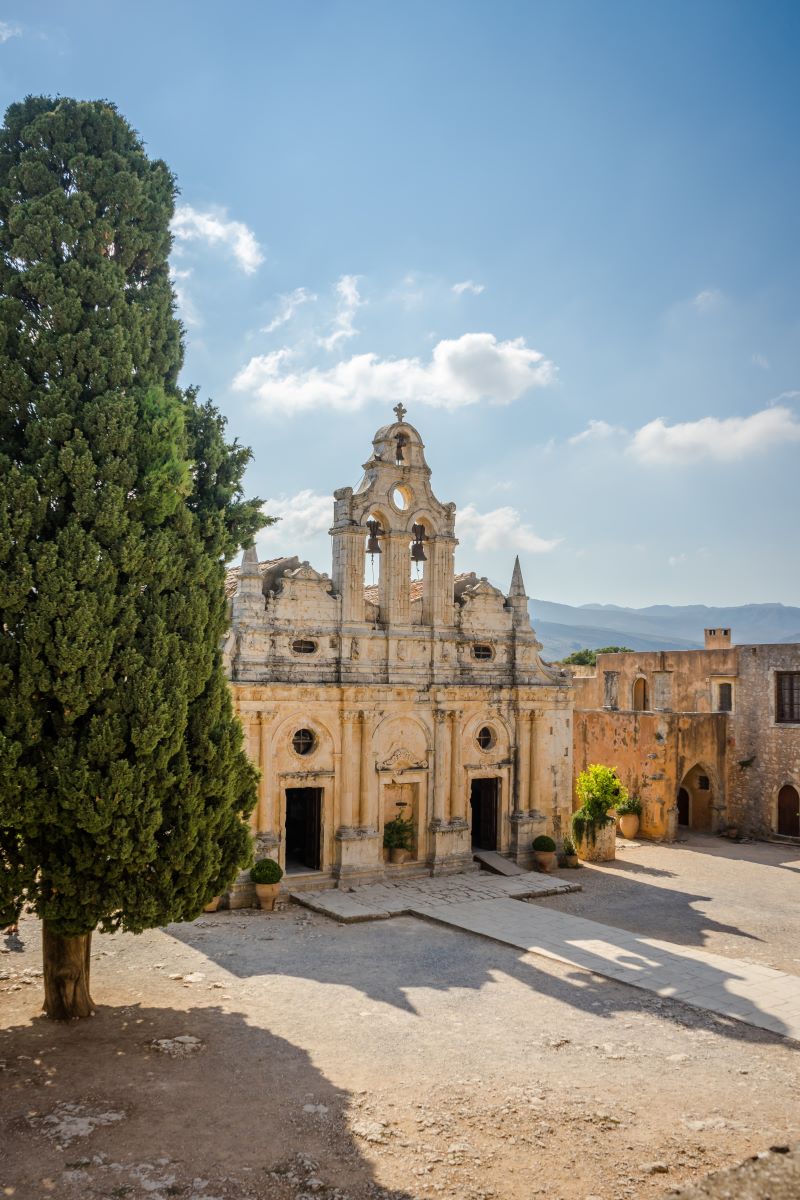
The Arkadi Monastery is a historic and significant site located in the mountains of central Crete.
Built in the 16th century, the monastery has played a major role in the island’s history, particularly during the Cretan resistance against Ottoman rule in the 19th century.
The monastery is known for the heroic actions of its monks during the Cretan uprising in 1866. When Ottoman troops attacked the monastery, the monks and refugees who had sought shelter there refused to surrender, choosing instead to fight to the death to protect themselves and their families.
The siege ended with a massive explosion, which killed many of the defenders but also led to the liberation of Crete from Ottoman rule several years later.
Visitors to the Arkadi Monastery can explore the historic site, which includes a church, a museum, and a library.
The church is particularly notable for its stunning frescoes and ornate decorations, which provide a glimpse into the artistic and cultural heritage of the island.
In addition to its historical significance, the Arkadi Monastery is also known for its peaceful and serene atmosphere.
Visitors can take a stroll through the monastery’s gardens, which are filled with fragrant flowers and ancient olive trees.
The monastery also produces its own wine, olive oil, and honey, which visitors can sample and purchase at the onsite shop.
23. Take a Jeep safari tour to explore the island’s rugged interior
A Jeep safari tour is a thrilling way to explore the rugged interior of Crete, which is filled with stunning landscapes and hidden gems that are off the beaten path.
These tours typically take visitors off-road, allowing them to explore parts of the island that are inaccessible by traditional vehicles.
During the tour, visitors will travel in a specially equipped Jeep, which can handle the rough terrain and steep inclines that are common in the interior of the island.
The tour will take visitors through small villages and along winding mountain roads, offering spectacular views of the surrounding countryside.
One of the highlights of a Jeep safari tour is the opportunity to visit secluded beaches, hidden caves, and natural springs that are only accessible by foot or by Jeep.
These spots are often less crowded than the popular tourist destinations, allowing visitors to enjoy the natural beauty of the island in a peaceful and relaxed setting.
Along the way, visitors can also learn about the history and culture of the island from their knowledgeable guide, who will point out landmarks and provide insight into the island’s rich heritage.
24. Go rock climbing in the Kapsodasos Gorge
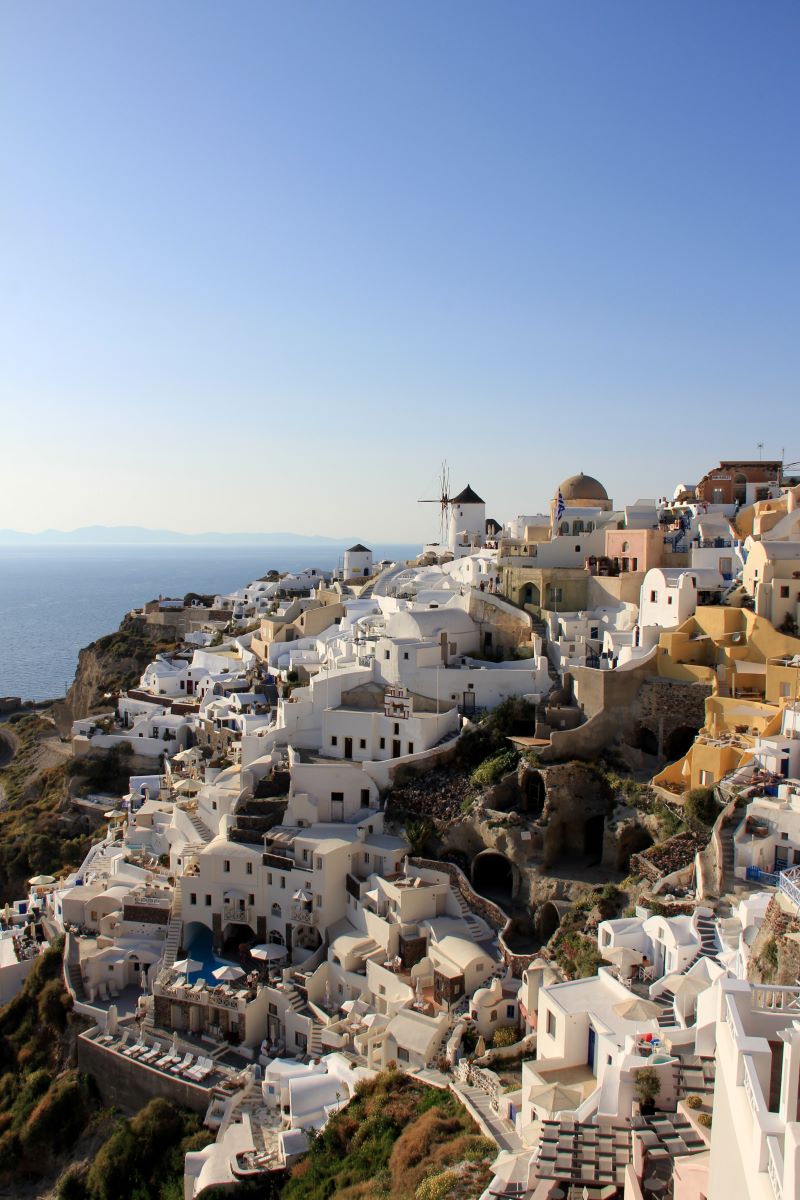
Rock climbing in the Kapsodasos Gorge is an exciting and challenging activity for adventure seekers and outdoor enthusiasts.
Located in the region of Rethymno, this beautiful gorge offers an ideal setting for climbers of all skill levels.
The Kapsodasos Gorge features a variety of routes, ranging from easy to difficult, with varying degrees of elevation and technical difficulty.
Climbers can choose routes that suit their skill level and experience, and there are plenty of challenges to keep experienced climbers engaged.
The gorge is characterized by steep rock walls, narrow gorges, and beautiful natural scenery, making it a breathtaking destination for climbers.
The routes are well-equipped with anchors and bolts, making it a safe and accessible location for climbing.
Climbing in Kapsodasos Gorge is typically done in small groups with a certified guide, who provides instruction, equipment, and safety tips.
The guide will also take climbers to some of the most scenic spots in the gorge, providing a unique and unforgettable experience.
25. Visit the ancient city of Aptera
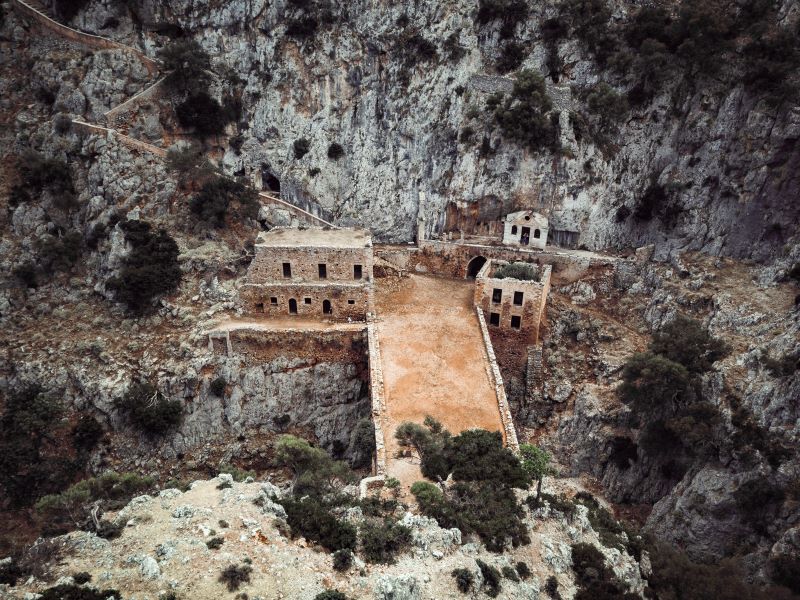
The ancient city of Aptera is a fascinating historical site located in western Crete, near the town of Chania.
Aptera is thought to have been inhabited as early as the Minoan period, around 1400 BC, and was an important city in ancient times due to its strategic location on a hill overlooking the Bay of Souda.
Visitors to Aptera can explore the ruins of the ancient city, which include a theater, a Roman bathhouse, a cistern, and a number of temples and other buildings.
The site is well-preserved, with many impressive structures and artifacts that offer a glimpse into the city’s long and storied history.
One of the most impressive features of Aptera is the ancient walls that surround the city.
These walls, which were built during the Hellenistic period around the 4th century BC, are still largely intact and provide a powerful reminder of the city’s past.
Visitors to Aptera can also enjoy stunning views of the surrounding countryside and the Bay of Souda.
The site is surrounded by beautiful natural scenery, with mountains rising up on one side and the sea stretching out on the other.
26. Take a boat tour to the small island of Chrissi
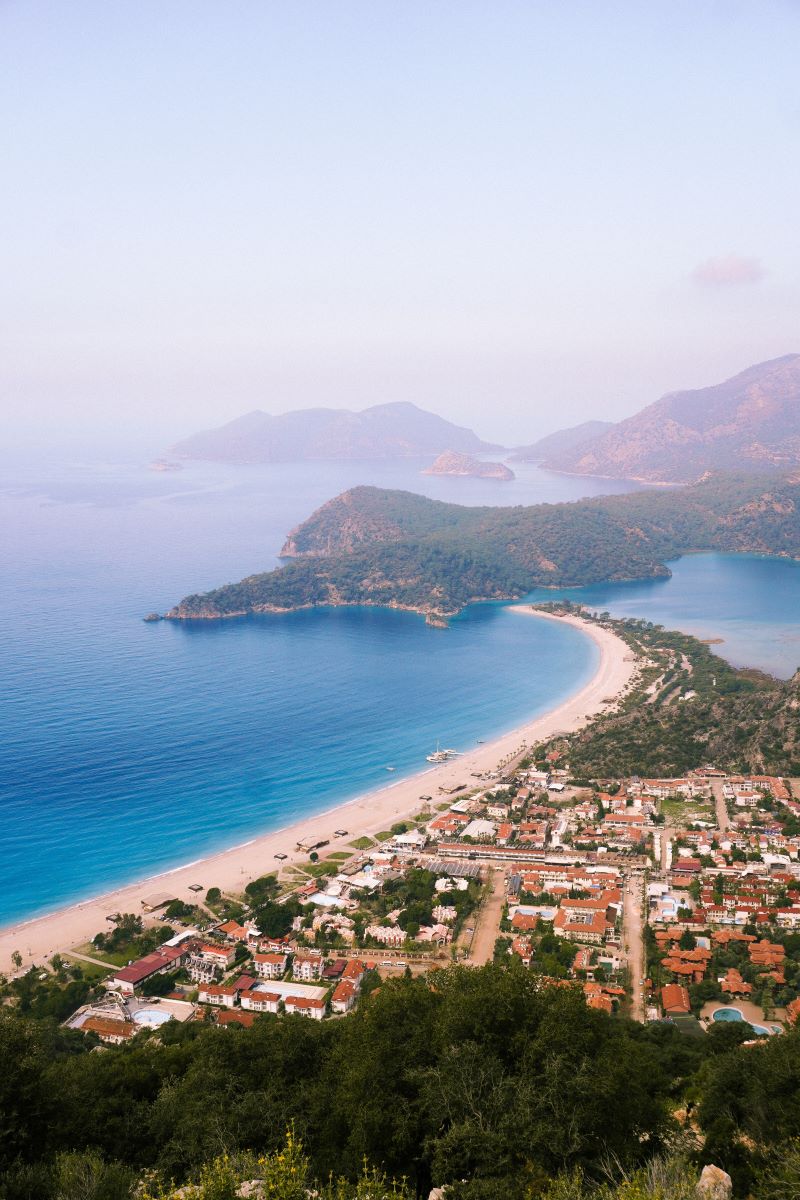
A boat tour to the small island of Chrissi is a must-do activity for anyone visiting Crete.
Located off the southern coast of the island, Chrissi is a small, uninhabited island that is known for its pristine beaches, crystal-clear waters, and unspoiled natural beauty.
The boat tour to Chrissi typically departs from the port town of Ierapetra, on the southern coast of Crete.
The tour takes visitors on a scenic journey across the sparkling waters of the Mediterranean Sea, with stunning views of the coastline and the rugged mountains of Crete in the distance.
Upon arrival on Chrissi, visitors are greeted by a breathtaking landscape of white sand beaches, crystal-clear turquoise waters, and lush green vegetation.
The island is home to several beautiful beaches, including Golden Beach and Belegrina Beach, which offer plenty of opportunities for swimming, sunbathing, and snorkeling.
In addition to its natural beauty, Chrissi is also home to a small church, a lighthouse, and several other historic landmarks that offer a glimpse into the island’s past.
Visitors can also explore the island’s natural wonders, including its unique rock formations, sand dunes, and rare plant and animal species.
27. Go windsurfing at Kouremenos Beach
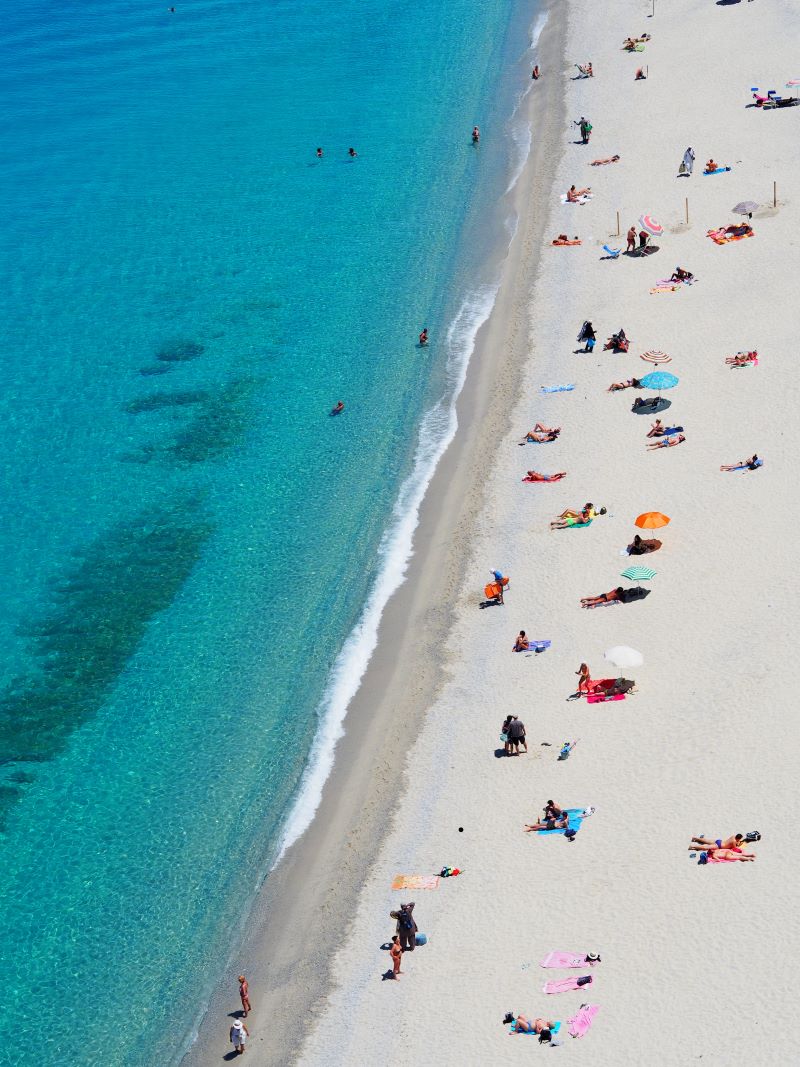
Kouremenos Beach is a top destination for windsurfing enthusiasts visiting Crete.
Located on the eastern coast of the island, near the village of Palekastro, Kouremenos Beach is known for its consistent winds and ideal conditions for windsurfing.
The beach offers a long stretch of sandy shoreline, backed by rugged hills and lush vegetation.
The wind at Kouremenos Beach is typically strongest in the afternoon, making it the perfect time to hit the waves and ride the wind.
Windsurfers can rent equipment and take lessons from several windsurfing schools located directly on the beach.
These schools offer a range of courses, from beginner to advanced, and provide all the necessary equipment and instruction needed to enjoy the sport safely.
In addition to windsurfing, Kouremenos Beach is also a popular destination for kitesurfing, stand-up paddleboarding, and other water sports.
The beach offers plenty of facilities for visitors, including sun loungers, umbrellas, showers, and changing rooms, as well as several restaurants and cafes where visitors can grab a bite to eat or relax with a cold drink after a day on the water.
28. Explore the beautiful Lasithi Plateau
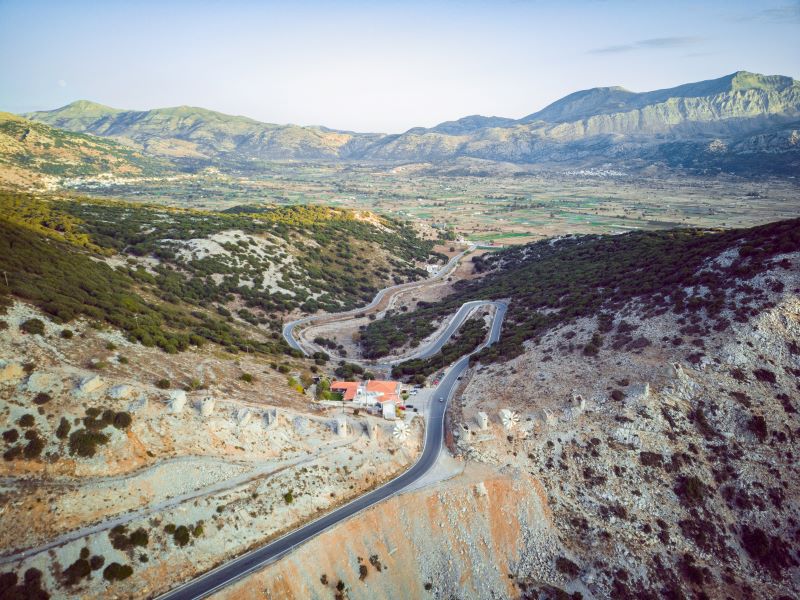
The Lasithi Plateau is a beautiful and fertile highland region located in the eastern part of Crete, at an altitude of around 800 meters above sea level.
Surrounded by impressive mountains, the plateau is home to traditional villages, beautiful landscapes, and ancient historical sites.
The Lasithi Plateau is known for its scenic beauty, with rolling hills, lush greenery, and stunning views of the surrounding mountains.
Visitors can explore the area by foot or by car, with many scenic routes that wind through the hills and past traditional villages.
One of the most popular attractions on the plateau is the Dikteon Cave, which according to Greek mythology was the birthplace of Zeus, the king of the gods.
The cave is located on the slopes of Mount Dikti, and visitors can explore its depths on a guided tour.
Another must-see attraction on the Lasithi Plateau is the windmills of Lasithi, a unique and historic feature of the landscape.
These traditional windmills were used for centuries to grind grain and pump water, and visitors can still see many of them in operation today.
The Lasithi Plateau is also known for its rich history and culture, with many ancient historical sites located in the region.
One of the most notable is the ancient city of Lato, which dates back to the 7th century BC and is now a popular archaeological site.
Visitors to the Lasithi Plateau can also enjoy the local cuisine, which is known for its delicious cheeses, honey, and traditional dishes like lamb roasted on the spit.
The region is home to many traditional tavernas where visitors can enjoy a hearty meal and a glass of local wine while taking in the beautiful views.
29. Visit the Magical Beach of Loutro
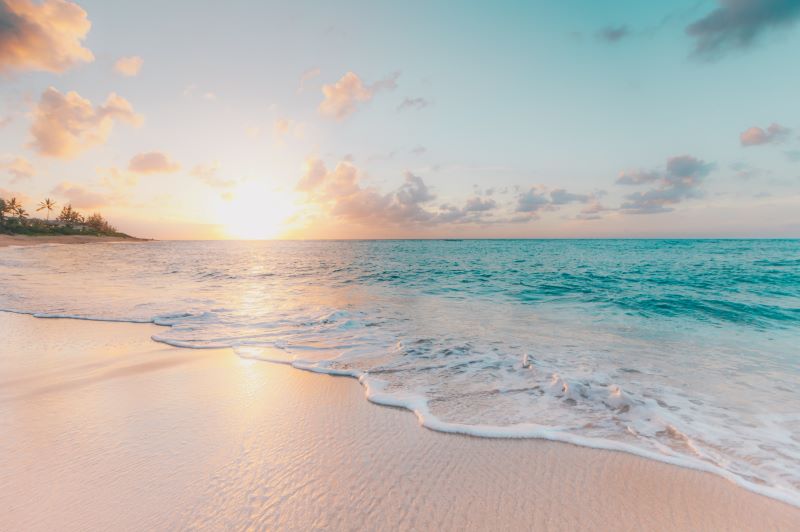
The beach of Loutro is a small and picturesque pebble beach located in a sheltered cove on the south coast of Crete.
The crystal-clear waters of the Libyan Sea are perfect for swimming and snorkeling, and the surrounding cliffs offer a stunning backdrop for sunbathing and relaxing.
The village of Loutro itself is accessible only by boat or foot, adding to its secluded and peaceful atmosphere. Visitors can enjoy a meal at one of the local tavernas, take a stroll along the beach or simply sit back and enjoy the breathtaking scenery.
Loutro is often described as one of the most idyllic spots on the island, and a visit here is sure to be a highlight of any trip to Crete.
30. Visit Plakias Beach
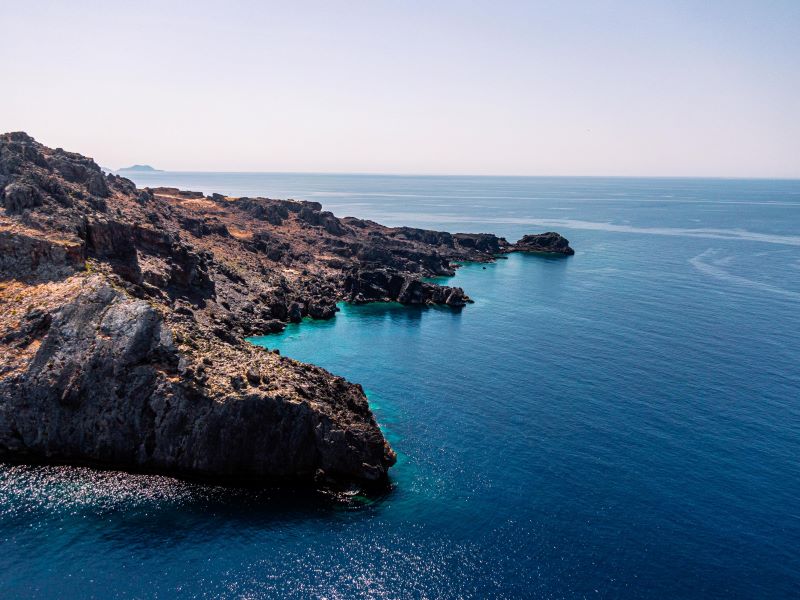
Plakias Beach is a stunning and long sandy beach situated in the south coast of Crete.
The beach is framed by dramatic cliffs and crystal-clear waters of the Libyan Sea, making it an ideal spot for swimming, sunbathing, and water sports.
The beach is well organized with beach umbrellas and sunbeds, as well as several tavernas and bars where visitors can grab a snack or a refreshing drink.
Beyond the beach, the village of Plakias is a charming and authentic Cretan town with a laid-back atmosphere, traditional houses, and winding alleys.
Visitors can explore the nearby villages, hike the surrounding hills, or simply take a stroll along the beach and enjoy the spectacular scenery.
Plakias Beach is a popular destination for families, couples, and solo travelers alike, and offers a relaxing and unforgettable experience in Crete.
Greek Food In Crete
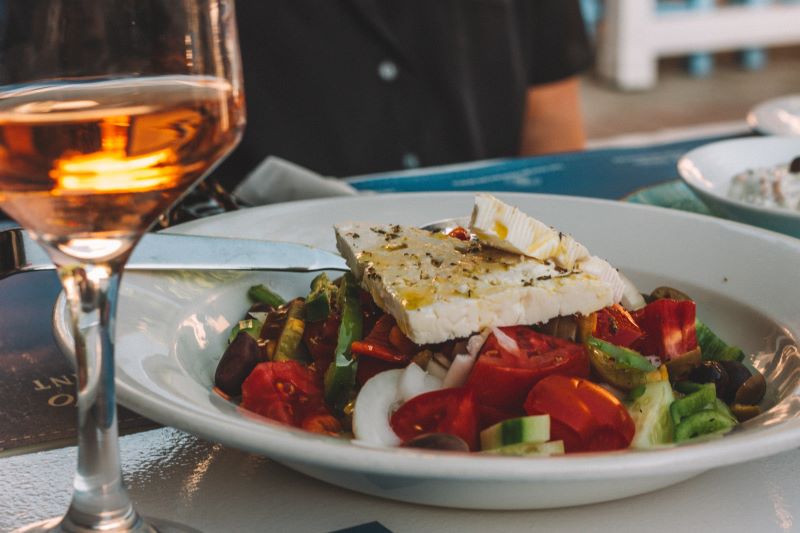
Cretan cuisine is renowned for its simple, fresh, and healthy ingredients, with an emphasis on local and seasonal produce. Here are some of the best dishes to try in Crete:
- Dakos – a traditional salad made with barley rusks, fresh tomatoes, feta cheese, and olive oil.
- Sfakianes pites – a type of traditional pie from the region of Sfakia, made with cheese and honey.
- Kalitsounia – small pies filled with local cheese and/or herbs, often served as a snack or appetizer.
- Grilled octopus – a common seafood dish, usually served with olive oil and lemon.
- Gavros – fried anchovies, often served with a squeeze of lemon.
- Stifado – a stew made with beef or rabbit, cooked in a tomato and onion sauce with spices.
- Moussaka – a layered dish made with eggplant, minced meat, and béchamel sauce.
- Dolmades – vine leaves stuffed with rice and herbs.
- Boureki – a type of pie made with sliced zucchini, potatoes, and feta cheese.
- Loukoumades – small doughnuts, often served with honey and cinnamon.
In addition to these traditional dishes, Crete is also famous for its high-quality olive oil, which is used in many dishes, as well as its local wines and raki (a strong alcoholic drink).
Best Restaurants In Crete
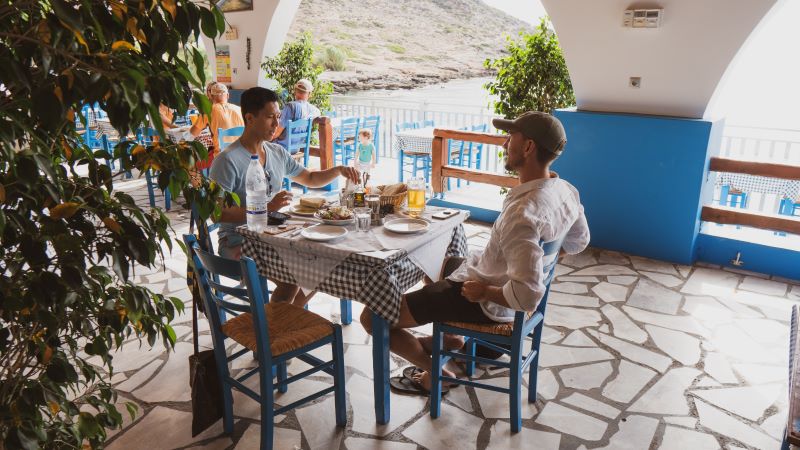
Here are some highly recommended restaurants in Crete based on reviews and ratings:
- Peskesi – Heraklion
- Tamam – Chania
- Salis – Rethymno
- Kritamon – Chania
- Avli – Rethymno
- The Well of the Turk – Chania
- Filograna – Heraklion
- Prima Plora – Chania
- Pelagos Seaside Restaurant – Agia Pelagia
- To Xani – Heraklion
- Stoa Firakis – Chania
- Thalassino Ageri – Platanias
- Eleonas – Chania
- Zepos Restaurant – Heraklion
- Kri-Kri – Chania
- Laikon Cafe-Restaurant – Chania
- The Alchemist – Heraklion
- Mavrikiano – Elounda
- 7 Thalasses – Chania
- Elia & Diosmos – Rethymno
- Oinomageiremata – Chania
- Symposium – Heraklion
- Erganos – Chania
- Kri Art Cafe Restaurant – Rethymno
- Ta Chalkina – Chania
- En Plo – Chania
- Koutouloufari Village Holiday Club Restaurant – Hersonissos
- To Antikristo – Chania
- Spilia Seaside Restaurant – Platanias
- Patriko Traditional Restaurant – Georgioupoli
- Agora – Rethymno
Transportation In Crete
Crete has a well-developed transportation system, with several options available for visitors to get around the island.
One of the most popular ways to travel around Crete is by rental car. There are numerous car rental agencies located throughout the island, and renting a car gives visitors the freedom to explore at their own pace.
However, driving in Crete can be challenging, with narrow roads, steep mountain passes, and winding coastal routes, so drivers should be confident and experienced.
Another option is public transportation, which includes buses and taxis. The bus system is extensive, with frequent services connecting all major towns and villages, as well as many of the island’s tourist attractions.
Taxis are widely available, but they can be expensive, especially for longer journeys.
For those looking for a more unique experience, there are also several companies offering tours and excursions by minibus, jeep, or even horseback.
These tours are a great way to see the island’s hidden gems and get off the beaten path.
Finally, ferries are available for those wishing to travel between Crete and other Greek islands, as well as to mainland Greece. There are regular ferry services connecting Crete to Athens and other major Greek cities, as well as to nearby islands such as Santorini and Mykonos.
There are many more things to do in Crete, but this list should provide a great starting point for your trip. Enjoy your time in Greece!
Be sure to check out our vlog The Go To Family. Connect with us on Instagram, Twitter, and Pinterest !


